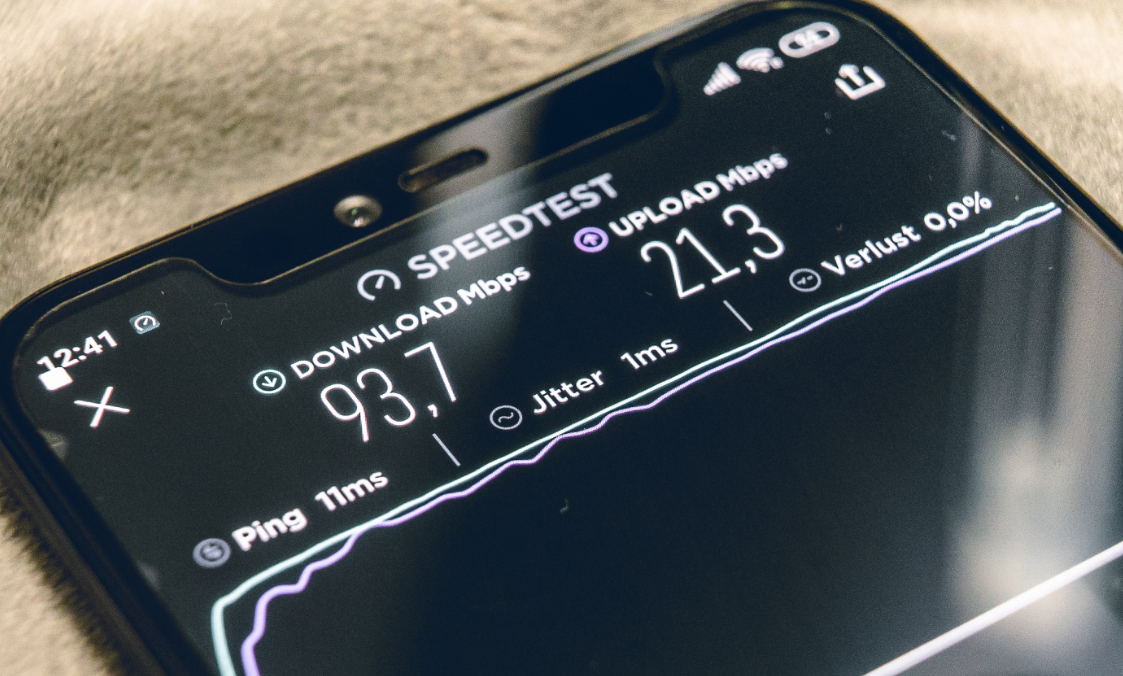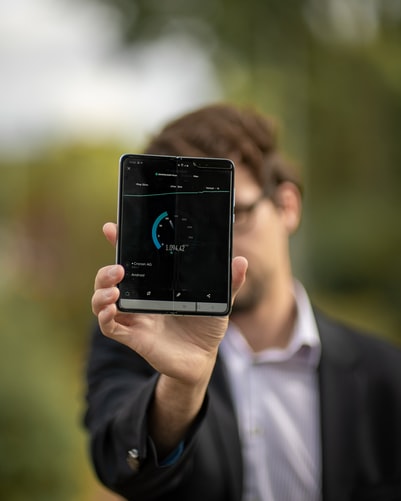Are you trying to enhance and improve your connectivity indoors? If so, you might be weighing up whether it’s best to go for Wi-Fi 7 or 5G. Both of these technologies offer their own unique strengths. Perhaps you’re leaning towards the increased bandwidth and efficiency that comes with Wi-Fi 7 connectivity. Or maybe you’re more interested in the low latency and reliability that 5G can offer you. Which is the one for you?
We live in a world where we are extremely reliant on a continuous, reliable and secure connection – Whether that’s using a device for work or relaxing at the end of a long day. We need online video conference calls that don’t drop out and Netflix binges that don’t buffer.
So how do we meet this demand? The tech world increasingly offers us solutions that evolve alongside our digital needs. We’ve gone from 4G/LTE to 5G when it comes to mobile connectivity, and from Wi-Fi 5 to 6 to 6E and now the emerging Wi-Fi 7 in the wireless networking world.
Everyone wants to know which is best! Which tech development will offer the better improvements on previous issues and limitations – 5G or Wi-Fi 7? Unfortunately, it’s not a straightforward answer.
Focus on Outdoor Mobile Coverage
Both the tech industry and government have predominantly focused their improvement efforts on outdoor mobile coverage.
Whilst undoubtedly worthwhile schemes like the Shared Rural Network have helped to improve outdoor 4G mobile coverage in hard to reach areas, they still have a way to go when it comes to poor indoor mobile coverage.
Interestingly, this is despite knowing that the average person spends 90% of their time indoors, with 80% of all mobile data traffic being generated or terminated indoors.
Meeting the Growing Demand for Indoor Coverage with Emerging Wireless Technology
Back in 2020, both Wi-Fi 6 and 5G entered the commercial wireless market. The connectivity requirements of most domestic indoor environments can be met by Wi-Fi 6. However, in terms of reliability and quality of service with increasing service demands, 5G steps up to the plate and outperforms Wi-Fi 6.
But now that Wi-Fi 7 is arriving on the scene, the tech world needs to have another look at the growing demands for indoor coverage for both public and private places, and what the role of Wi-Fi and 5G is within that space.
Performance Capabilities of Wi-Fi 7 and 5G
As you can see in the graph above, there is a significant jump in theoretical bandwidth for Wi-Fi 7, from 9.6 Gbps (Wi-Fi 6) rising to speeds of 46 Gbps. The speed of 5G sits at 10 Gbps.
When it comes to latency, 5G can offer a latency as little as 1 ms (with a range of between 1 and 10). Wi-Fi 6 sees latency of approximately 20 ms, with Wi-Fi 7 showing an improvement here with a latency of under 5 ms, rivalling that of 5G.
However, we must remember that the speed and latency rates shown here are theoretical only and unlikely to be experienced by users.
When it comes to range, Wi-Fi 7 and 5G have faster speeds due to sacrificing smaller cell coverage range. Wi-Fi 7 can reach 50-100 metres on the 2.4 GHz band, whereas 5G can reach between 500 metres and a few square kilometres depending on the frequency band and transmission power.
Is 5G Most Likely to be Adopted by the Manufacturing and Logistics Sectors?
5G has particularly appealed to the manufacturing and logistics sectors, but many industries are showing interest.
Integrating smart technologies indoors has become a big part of many private businesses, leading to them choosing to deploy 5G networks with access to licensed and unlicensed spectrum.
5G offers much when it comes to speed, capability and low latency, lending itself well to real-time applications for example, tracking lone-workers in industrial and potentially hazardous environments, and tracking last-mile logistics in the manufacturing sector.
Businesses, homes and venues can also make use of mobile broadband with 5G for the likes of high-quality streaming, VR/AR and other broadcasting services being used indoors.
What Stands Out About Wi-Fi 7?
In what ways can Wi-Fi 7 help to improve indoor connectivity? The following features are expected to help indoor activities for domestic, industrial and public sector use within the UK economy and wider society in a significant way, offering a valuable addition to indoor connectivity infrastructures.
- It operates across 3 frequency bands, 4K QAM and increased channel width (320 MHz)
- More reliable wireless connection
- Greater transmission rates
- Increased efficiency
- Can handle large amounts of devices and large volumes of traffic
- Will maintain high speeds with low latency
Let’s remember that whilst almost all devices can run on Wi-Fi 7, to be able to fully harness the available efficiencies with speed and latency consumers will need to be using devices made in 2024.
For this reason, it’s tricky to measure the overall impact and benefit of Wi-Fi 7, however it’s likely to become much clearer over the next few as we see the prevalence of Wi-Fi 7 capable devices increase.
As the adoption of Wi-Fi 7 technology is most prevalent in the industrial sector, we’re most likely to see the biggest impact of Wi-Fi 7 in that arena.
Could 5G Be Deployed Alongside Wi-Fi 7?
A deployment of 5G alongside Wi-Fi 7 is likely.
We’re expecting to see this combination in public and private spaces that switch between indoors and outdoors where reliability and low latency are important considerations for both spaces.
From public 5G networks in shopping centres to private 5G networks in manufacturing factories, we already see how mobile connectivity plays a big role and we would expect that to continue alongside Wi-Fi 7.
What are the Challenges for the Deployment of 5G and Wi-Fi 7?
To meet sustainability targets and reduce energy consumption, there has been an increase in the use of foil-backed insulation and energy-efficient glass within building construction. As well as the concrete, metal and brick already in use within buildings, these additional sustainability-meeting measure can significantly impact signal strength, especially when it comes to 5G networks.
Ways to tackle this issue include:
- Small cell deployment
- Signal boosters
- Antennas designed for 5G
In order to enable the best use of the spectrum, the hybrid sharing model of the 6GHz band between licensed mobile and Wi-Fi was designed. This ensures:
- Greater capacity
- Faster speeds
- Innovative services
Ofcom has supported and pushed this hybrid use method for 5G and Wi-Fi 7, but there does need to be more understanding of the practicalities, costs and complexities.
Hybrid solutions could however solve the issue of signal-reducing building materials, for example, LiFi, which concerts 5G signal to Wi-Fi.
There also needs to be policy and guidance from the UK government in terms of improving indoor connectivity. Last year in 2023, we saw stakeholders across the telecommunications sector get help for improving mobile connectivity with the Wireless Infrastructure Strategy setting out a clear plan.
We now need a similar strategy to address indoor connectivity specifically so that the industry can be challenged to improve indoor coverage and have targets similar to those of outdoor coverage targets.
Wi-Fi 7 vs 5G – Or Should They Go Hand in Hand?
Wi-Fi 7 and 5G will play a vital role in addressing the issue of poor indoor connectivity.
Here at Geekabit, we’re experts in all things wireless and deploying the best network for a specific property and use. We see how important it is to recognise that 5G and Wi-Fi 7 don’t need to be competitors pitched against each other, but as complementary technologies that could transform indoor connectivity for businesses both large and small.
We’re excited to see how both these technologies continue to develop. As the number of use cases develop, it will help us and others in the wireless networking industry to build bespoke solutions for those facing indoor connectivity issues.
We fully believe in maximising the potential benefits of both these technologies by joining them together rather than having to choose just one.
If you’re eager to see what connectivity improvements we can deliver for your business, get in touch with our Wi-Fi experts here at Geekabit today.




